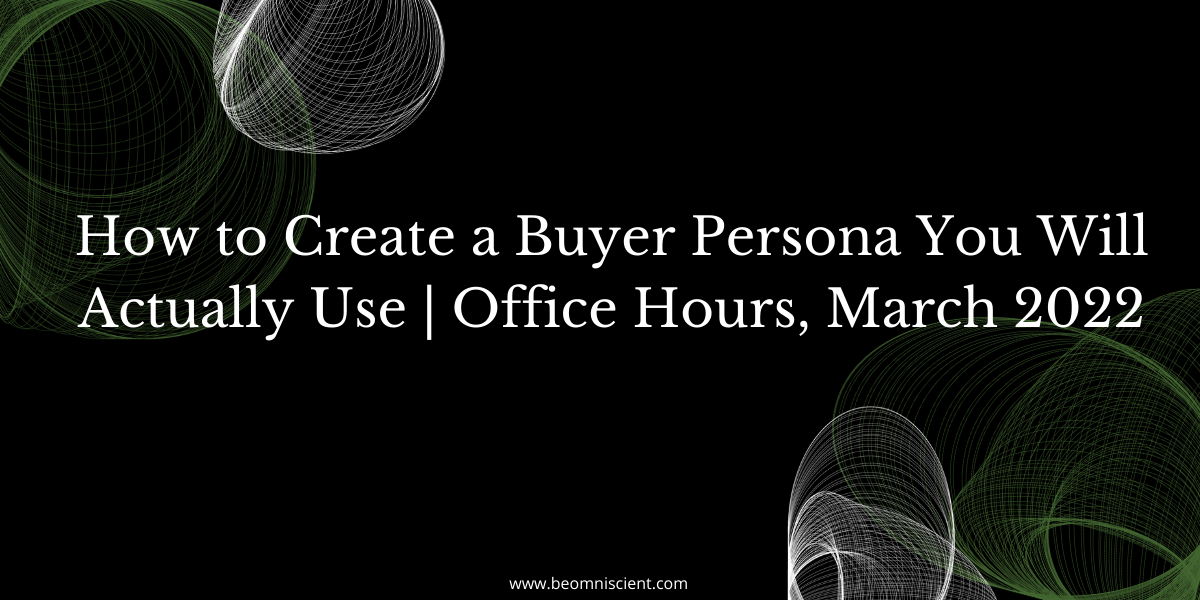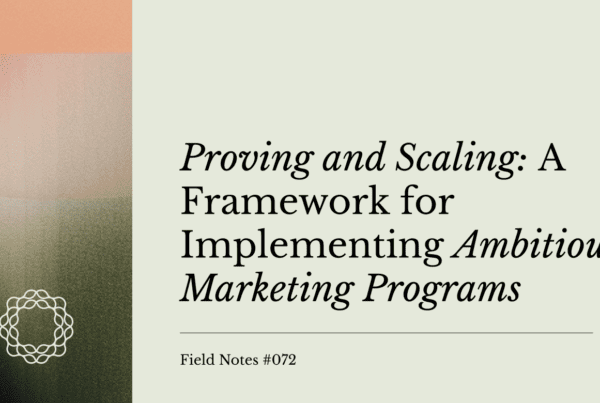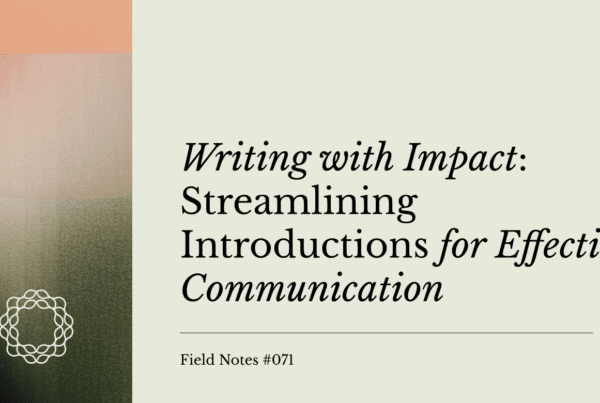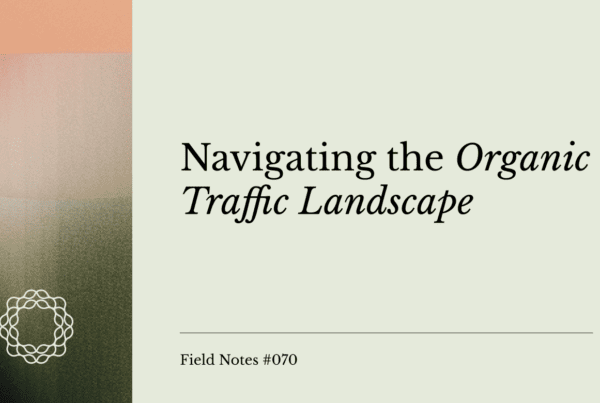
Why do marketers often abandon the buyer personas they spend so much time brainstorming?
Adrienne Barnes believes that most buyer personas fail because they’re not based on real buyers.
As the founder of Best Buyer Persona, Adrienne helps companies create targeted, data-driven buyer personas their marketing teams actually use.
On Office Hours, Adrienne talked to us about the importance of interviewing your customers to understand their motivations and how surveys and digital analysis fit into crafting a validated, actionable buyer persona.
Show Topics
- Learn the three pieces of a buyer persona
- Know your audience
- Learn how they behave & understand their motivations
- Interview your customers
- Hit record & ask why
- Send customer surveys
- Conduct digital analysis
Show Links
- Check out Best Buyer Persona
- Follow Adrienne Barnes on LinkedIn or Twitter
Watch the recording
Key Takeaways
05:19 – Learn the three pieces of a buyer persona
To reach your customers on a deeper level, you need to know: who they are, how they behave, and why they behave the way they do.
“There are three parts of a buyer persona that every persona should answer. It needs to tell you who your customers are, how they behave and why they behave the way they do. You always hear this: ‘You need to know your customers. Know your customers.’ Like I said before, everyone thinks they do, but then customers are saying they don’t. So what does it really mean then to know your customers? If we say that, if we say, ‘know your customers,’ what does that mean? It means you need to be able to answer these three questions: Who they are, how they behave and why they behave the way they do. That will get you an actionable buyer persona. If you can really answer each of those three buckets of questions, now you know how to empathize and what kind of content to create and what questions to answer. All of those different things really come from having a clear and actual buyer persona.”
06:10 – Get to know your audience
Dig into more nuanced questions around identity, motivations, and success to craft a more realistic picture of your target audience.
“Who are your customers? That’s something you need to be able to answer. When I’m saying, ‘Who are they,’ what you need to know about them is what are their experiences? What is their buyer journey? What are some questions they have? Every buyer persona I do, especially for B2B SaaS, we look at what I call the four R’s — their roles, their rituals, their relationships, and their responsibilities. That can go as much in detail as job titles. What is your role? What are the KPIs that you are measured against? In your job, what is deemed success? How are you measured? How do you gauge when you’ve done a good job or what kind of things are you responsible for? What does your day look like? What time do you start work? What other tools do you use on your tech stack? It answers all of those different kinds of questions, which are imperative to know if we’re actually going to serve these people well, if we’re actually going to create entire growth strategies and product roadmaps that will serve them in a way that meets their needs.”
08:46 – Learn how your customers behave
To make informed decisions about your marketing strategies, dedicate time to understanding how your audience interacts with your brand.
“Who are the people that influence them? What are the moves they make? This also goes into looking at your heat maps on your website and understanding their journey, understanding how they interact with you. Do they share content or do they just simply read it? Are they likely to retweet and comment as a part of their engagement or are they more a type of engager where they’re just going to open it and read it and then never really share with anybody else? Various groups really do have different ways that they engage and behave with content. I think as, especially since most of us are doing some type of content marketing and the buyer personas, we really want to be able to understand those types of behaviors. That lets us create accurate KPIs for our content. If we know that our audience is most likely only to be the type that’s going to open a piece of content from Twitter and not necessarily comment on it or retweet it or share it, they’re very private in the way that they view content, then we know that open rates should be something we want to look at and not necessarily retweets or likes. If we based our KPI on retweets and likes, we would look like we failed all the time.”
10:13 – Understand customer motivations
Use tools and conversations to learn why your customers behave the way they do.
“So then, why do they behave the way they do? The why is the best piece of information you can have, but also the most challenging to understand. Understanding the why behind your customers’ actions provides confidence in your data accuracy. If you really do, you’re going to be able to find all of this other stuff through a third-party, through different tools, through your own digital intelligence, but you’re never going to understand why they behave the way they do if you don’t talk to them and if you don’t just ask them. Surveys don’t really get to the why. It really is through customer conversations. This is the part that allows you to use their own words and copy to understand truly what those emotional and social drivers are. It allows you to serve them with empathy and then really create community for your consumers. So, ‘why’ is a huge piece that I think a lot of people miss when they create their buyer personas. They’re not understanding the why behind their actions.”
11:37 – Interview your customers
Talking to customers is the best way to gain an accurate understanding of their social and emotional drivers.
“It really is a valuable asset for anyone creating a buyer persona. If you are trying to understand your customers and all you’re using is third-party data or your own digital intelligence, your first-party data, you’re really missing out on getting to the core of those social and emotional triggers. What was it that actually convinced you to buy? What are the real problems and pain points that they’re trying to solve? Then really getting to, I’m sure you’ve probably heard it, that ‘five why’ concept. If you can ask somebody why five times you get to the core of their motivation. That’s basically what this is. Now, I would never suggest that you ask the customer why five times. That would get annoying. But through an interview, you can hear a frustration or a delight and then really lean into that and try to uncover deeper insights and deeper motivations that you would not be able to do on a survey. Once you get a survey answer, that’s it. You’ve got the answer. There’s no further clarification. There’s no way to understand a little bit more. There’s no nuance. And the only way to get that nuance is through the interviews.”
13:18 – Listen more than you talk
During each customer interview, make room for uncomfortable pauses to give the interviewee space to share their answers in a supportive and uninterrupted environment.
“The type of listening you have to do to get value out of an interview is really different than the kind of listening and conversations you have every single day. You need to be prepared for awkward silences. You need to be prepared to ask the question and then sit and let the interviewee respond and think. Sometimes interviewees start responding and they talk through their answer and then they finally get to their core answer. Other types of interviewees will really need silence to formulate a thought. That’s a really big part of creating a valuable interview is being able to sit and listen to what someone has to say.”
14:02 – Don’t forget to hit record
Be sure to record each customer interview to capture nuances, streamline transcription and share the learnings with your team.
“If it’s just sitting in your brain, on your computer or on your notepad, it’s basically useless to everybody else. Honestly, if you think you are gathering the insights while you’re in the depths of an interview, you’re not likely to. You’re going to miss a whole lot of key stuff. You’re going to miss some of the things that they said that you were probably sitting there thinking about something else. Like, ‘Oh, they mentioned this thing earlier. I really want to make sure I follow up on that.’ Then they say another thing and your brain is still thinking about the thing two comments ago. Recording allows you to go back and hear all of those little bitty comments that were made, all of the opportunities and all of the things where it’s like, ‘Oh, I see this was really good.’ And it allows you to share with others. That’s really the point is you’re gathering data and you’re sharing with others.”
15:23 – Ask “why” often in interviews
Use customer interviews as opportunities to dive deeper into why they feel a certain way or performed a certain action.
“Make sure you’re asking, ‘why?’ Remember, we said that ‘why’ added a lot of the nuance and the layers to understanding their behavior. Anytime you get an answer that seems like it’s maybe emotionally charged, or that maybe there was a lack of understanding, or if you are the founder or the person who’s really connected to the tool or the software and they say something like, ‘Well, you know, I was doing this and it just didn’t work,’ and you find yourself wanting to defend the thing, that’s when you should ask, ‘why.’ Never defend or explain on an interview because the moment you’ve done that you’ve lost the interviewee. Now, you’re providing information. You’re no longer listening. You are providing. So asking ‘why.’”
16:46 – Send customer surveys
Surveys are a useful tool to validate your learnings across a wider segment of your audience.
“I use surveys to validate interviews in a best-case scenario. I even tweeted this yesterday. I’m breaking some of my own rules with surveys. I find that surveys are a tool that are very flexible. You can use them to identify who maybe should get on a call. Most likely, I like to use them in the other way. The survey validates what I’ve already learned on the interview. So, I’ll do a few interviews, create my survey questions and then I’ll be able to ask a lot of people similar questions and see where the patterns are in the responses. Keep your survey as short as possible. Unless you are outright paying people to participate in the survey, which I’ve actually seen done, you want to be very respectful of people’s time and be very transparent in your ask. Like, ‘We are asking you 15 questions. It should take you this long. We’d love to have your thoughts.’”
20:27 – Conduct digital analysis
Digital tools and software can provide even more insight into customer behavior online. Using character creators can help you make better-visualized buyer personas.
“I use Audiense. I use SparkToro. I use Semrush. I will use all kinds of different things. Basically, what I’m trying to find out is who are they? What platforms do they use? How [do] they identify? What are the keywords they use in their bio? What content do they engage with? All of that kind of information. I also use Brand24 for my social listening. That all really applies to understanding their behavior and where they show up online. Using those three tools all in conjunction, for me, does a really good job for my purposes and for actually understanding more about the buyer themselves. I’ll have more of the words, common words they use, common websites that they go to. What is trending right now? What are the conversations they’re having today? My social listening will tell me very clearly, these are the popular topics that they’re talking about. These are the words they’re using…Then we can address that from the point of view of the client, the point of view of the team. What is it that we need to get across? What do we need to say? How can we participate in that conversation?”



